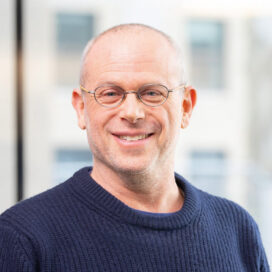
Ben Holtzman
Senior Research Scientist
Investigates rock physics and seismology using experiments, models, and machine learning for application to deep geothermal reservoirs.
Research Interests
My research began in field-based structural geology, drawn to ophiolites as windows into upper mantle processes. I migrated into experimental and theoretical rock mechanics and rheology for my Ph.D., in which I studied the interactions of deformation and melt migration, discovering how to make melt segregation and self-organized networks develop in the laboratory. I then became interested in the seismic expressions of such processes in the Earth, whether we could detect their presence in the upper mantle, with seismic anisotropy. Questions on the interpretation of seismic velocity led me to work on the processes of seismic attenuation in the upper mantle, and descriptions of rheology across the broad time scales in geophysics. In parallel, I built the Seismic Sound Lab with many collaborators — an effort to use data sonic and visual representation of data to help us better understand complex earth processes, not limited to earthquakes. Our work in sonification landed us in an interesting moment in the explosion of machine learning in geophysics, as we brought unsupervised methods from audio realms into seismology.
Combining basic-to-applied research in machine learning, rock physics and geothermal reservoir dynamics has become my primary focus, with the aim of making geothermal energy a viable resource for the energy transition.
Topics I investigate:
- Geothermal reservoir dynamics, integrating observational methods and thermo-mechanical modeling
- Experimental and Theoretical Rock Physics, applied to a broad range of brittle-to-ductile conditions and problems
- “Very Broadband Rheology”: general aspects of viscoelasticity of earth materials
- Machine Learning, primarily both unsupervised and physics-informed methods
- Sonic and visual representation of data for pattern discovery.
Biographic Sketch
Ben Holtzman earned his undergraduate degree in geology at Brown University, with a focus on field-based structural geology. He then went on to graduate school at the University of Minnesota, where he migrated to geophysics, specializing in experimental and theoretical rock mechanics while jointly studying at the Université de Montpellier, France. After completing a postdoctoral fellowship at Montpellier, Ben moved to the Lamont Doherty Earth Observatory of Columbia University in New York in 2004 as a postdoctoral researcher, before being appointed to a research scientist position. Ben joined the Earth Resources Laboratory in the Department of Earth, Atmospheric and Planetary Sciences in 2024 as a Senior Research Scientist and enjoys continued affiliations with Lamont and Strabo Engineering, Incorporated.
Key Awards & Honors
- 2011 • National Science Foundation CAREER Award
- 2000 • Fulbright Scholar Fellowship
Key Publications
-
Holtzman, B. K., Paté, A., Paisley, J., Waldhauser, F., & Repetto, D. (2018). Machine learning reveals cyclic changes in seismic source spectra in Geysers geothermal field. Science Advances, 4(5), eaao2929. doi: 10.1126/sciadv.aao2929
-
Holtzman, B. K., Chrysochoos, A., & Daridon, L. (2018). A thermomechanical framework for analysis of microstructural evolution: Application to olivine rocks at high temperature. Journal of Geophysical Research: Solid Earth, 123(10), 8474-8507. doi: 10.1029/2018JB015613
-
Holtzman, B. K., Kohlstedt, D. L., Zimmerman, M. E., Heidelbach, F., Hiraga, T., & Hustoft, J. (2003). Melt segregation and strain partitioning: Implications for seismic anisotropy and mantle flow. Science, 301(5637), 1227-1230. doi: 10.1126/science.1087132